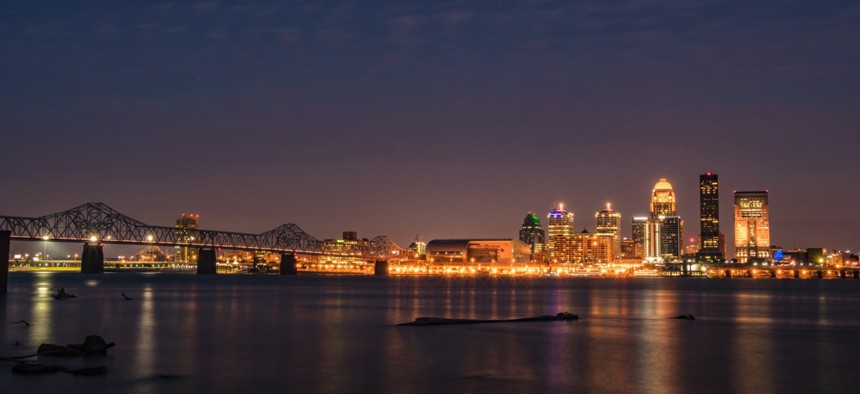This City Made Its Waze Data Actionable Moving to the Cloud

Louisville, Kentucky
Few of the cities that are part of the navigation app’s Connected Citizens data-sharing program actually do anything with the anonymized trip information they receive because of the volume.
Louisville, Kentucky was the fifth city to join navigation app Waze’s Connected Citizens data-sharing program, when it launched two years ago, but unlike others, it’s actually using the information.
Waze, which was acquired by Google in 2013 for $1.15 billion, seeks street, road closure and construction data from Louisville in return for anonymized trip information alerting the city to traffic jams, delays, accidents, potholes and downed limbs.
The trade was a no-brainer.
“It was easy for us to give that information because we were already collecting it,” Michael Schnuerle, Office of Civic Innovation data officer, told Route Fifty in an interview. “And we just put that on our open data portal, and they can collect it from there.”
Historic traffic information is helpful, and new use cases are still being found. But Louisville still wanted to centralize its traffic-related data with Waze’s and run predictive analytics on it in real time to help with signal timing among other applications.
So the city applied for and won an Amazon Web Services (AWS) City on a Cloud Innovation Challenge Dream Big grant to build an adaptive, traffic-flow management system.
Waze data now comes in every two minutes as a JSON file in Amazon S3, where previously files were processed in an internal Microsoft server using a bunch of code to ingest the information. Data could be accessed and queried, but not to its full potential.
At 600 million rows of data, joint table queries simply weren’t well supported like they are in the cloud for faster results. Data can now be merged to interact with signals, Louisville’s bus system and Kentucky Transportation Cabinet local info.
Only a handful of the cities that are part of Waze’s CCP use the data because it’s hard to manage, Schnuerle said, but moving to the cloud also enables Louisville to share its data structures on GitHub so others can replicate how it’s now using the information.
“Waze data is coming in in real time, but not everything is happening in real time right now,” Schnuerle said. “That’s kind of our goal.”
KentuckyWired, the state’s broadband infrastructure initiative, selected corridors throughout Louisville where gigabit fiber would be laid as part of a larger effort to establish a mesh network countywide.
The city is laying a municipal fiber network on top of Kentucky’s, remotely connecting more traffic signals with the help of the Amazon grant. By chasing the state, Louisville doesn’t have to worry about ground rock or right-of-way issues.
“Wherever they’re digging, we’re digging,” Schnuerle said.
Connected corridors align with the five major “spokes” of the city’s transportation system converging on downtown, where traffic congestion is worst.
There are currently a few radar sensors at intersections monitoring vehicle speeds, and more will be added to collect vehicle count, size differentiation and turning data.
Schnuerle wants emergency responders to get to the scene of accidents quicker and to relieve congestion by manipulating signal timing, once real-time analytics are established. When changes are made along traffic corridors, they’ll be analyzed to see how effective they are rather than having a study conducted.
“The flow of citizens around the county will be improved,” Schnuerle said.
Dave Nyczepir is a News Editor at Government Executive’s Route Fifty and is based in Washington, D.C.
NEXT STORY: VA seeks BPM bots






